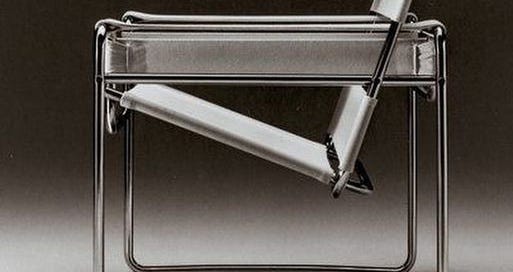We're Still Bending Tubes in AI
Why the application layer is lagging and how beauty emerges from experimentation
Jony Ive spoke with Patrick Collison last week at Stripe Sessions. The entire conversation was delightful. It touches on so many wonderful aspects of building with purpose, care, and respect for one another. The talk is worth a full listen.
Towards the end, Collison asks him about deliberate ugliness and the progression towards beauty in modernism: “Was there a strain towards modernism where it was trying to be intentionally dissonant or even ugly, to shock people?”
Ive gives a mesmerizing response:
That's a great question. I think what tends to happen is…very often at the beginning of a movement…whether it's a design or an art movement, there is that incredible energy. I mean, in a way by definition, if it marks the beginning of a movement—there is energy. And I think often beauty evolves…beauty takes time. Very often at the beginning, it’s an energy…it's an explosion and there's not time.
He continues on to share an example, drawing on the Bauhaus movement in Germany:
What’s interesting is these guys had just figured out how to bend tubes…and so what did they do? They bent tubes. That’s why all the furniture is bent tube furniture…they’d figured out this way of putting springs into tubes. And so of course, you run away and you’d bend as many tubes as you could get your hands on. Beauty probably wasn’t at the front of your mind.
He goes on to murmur one more time to himself, “bent tubes…heh”.
I loved the entire conversation but I especially found myself thinking about this answer days later.
I was reflecting on how that answer applies to this moment in AI. When you’re building in AI, you lose sense of normal time. Things move so fast and yet sometimes it’s hard to see how much is actually changing.
So far in 2025, I found myself often wondering:
Why is the application layer in AI taking so long to “arrive”?
We’re figuring out how to summon intelligence with prompts. We can steer models to reason, plan, memorize, and even act. We’re building copilots, assistants, agents, wrappers. All expressions of this new power.
But the pace and quality of iteration on the application layer has lagged the rate of model improvement.
Could it be that we’re still bending the tubes? And this moment in AI is our excitement trying to bend as many tubes as we can? Will beauty evolve in time?
Chat is how we’re bending tubes today
Chat gave us our first taste of magic with LLMs. It’s simple, intuitive, and familiar. Even more, it exposes the indeterminism of LLMs in the best way. Text in, intelligence out. It showed us what’s possible with little effort.
But chat itself embodies the "bending tubes" phase that Ive described. It’s powerful, but it's also raw and unfinished. The openness of chat creates ambiguity and cognitive overload. Users can feel unsure of how to start or proceed. When I see chat interfaces, I still feel we are somehow early. Like we’re excitedly experimenting with our new capabilities. But we haven’t yet found the right abstractions and metaphors.
I’m not claiming the next generation of generative interfaces will abandon chat entirely. But I am hopeful there’s an evolution. I want AI interfaces that strike a better balance between preserving indeterministic magic while gently guiding the user. As we integrate memory and context, I’m optimistic we can shape interactions without overwhelming users.
Just like beauty evolved slowly from Bauhaus designers first bending tubes, truly elegant AI interfaces will come only after we iterate beyond our current excitement.
Defining beauty for software
In this tube-bending phase of AI, we’re plugging LLMs into workflows, building copilots, engineering agents that automate away complexity. We’re excited.
Over time, I expect we will realize that capability alone isn’t enough. This movement started with that energy. But we will need abstractions, metaphors, and yes — taste. We need the patience to craft beautiful, AI-native products. Products that were designed from the ground up around intelligent systems.
This beauty goes beyond surface-level aesthetics. It taps into finding the essence of well-designed software. Ask yourself: if you started fresh today, knowing what our models can do, would we build software the same way? Would the Internet look the same? Would we still build the same devices, browsers, operating systems, web pages, apps, clicks, modals, navigation bars?
It would feel wrong. It’s too much friction. There is a pipe dream for how software with AI should feel: fewer barriers, less cognitive overhead, fewer distractions. Users should move fluidly from intention to action.
That’s true beauty. It’s usable. Intentionally simple. Delightful to interact with. Software should feel inevitable and natural. Like humans designed it.
Embracing the bending tubes
So why do we keep making bold predictions, even when the interfaces still feel so unfinished?
It’s belief. We sense the paradigm shift. And deep down, we believe we can shape it. Even if we’re wrong about the details, our predictions are a way of participating. They reflect our intent to influence what comes next.
Listening to Ive reminded me that everything is happening as it should. It’s okay that we haven’t found the perfect metaphors yet. That our interfaces still feel clumsy. We’re not behind, we’re early.
We’re bending tubes. And that’s the work.
The only way to arrive at something truly beautiful is to build through the early chaos. So let’s keep predicting. Keep designing. Keep sketching the outlines of what’s possible.
The future doesn’t just happen to us. We shape it, one bent tube at a time.




